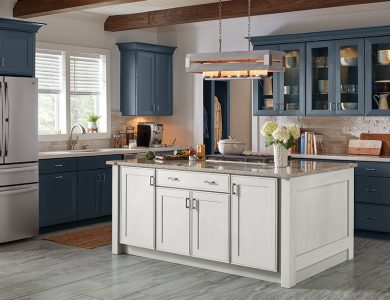
How Are Plumbing, Electrical, and Mechanical Systems Integrated Into Modern Buildings by MEP Companies?
MEP design and its integrated solutions play a strategic role in achieving optimal performance, energy efficiency, and comfort for those using structures in today’s developed technological buildings. It is therefore a principal role of MEP firms to coordinate such important structure systems rationally and logically. Integrating these crucial building systems logically and efficiently is a major responsibility of MEP firms. Assuring that all of the systems function cohesively as a single, harmonic unit within the larger framework of the building’s architecture and intended usage presents a challenge alongside each system’s design and installation.
Complex networks of waste management, lighting, HVAC, electrical power distribution, and water supply are essential to modern structures, whether they be huge residential complexes, business skyscrapers, or medical institutions. To provide an efficient, safe, and comfortable interior environment, each of these systems must carry out its intended purpose and work well with the others. Using cutting-edge technologies, creative design strategies, and teamwork techniques, MEP firms are leading the way in tackling this integration challenge and producing the best outcomes.
Early Collaboration’s Significance
Working early and closely with structural engineers, architects, and other building design stakeholders is one of the core tactics MEP firms use to guarantee successful system integration. Participating in the early stages of planning allows MEP specialists to offer insightful advice on space needs, load estimates, and possible conflicts between various systems. When problems arise during construction or operation, this proactive method helps to find and fix them before they become expensive difficulties.
For example, it might be challenging to plan where plumbing lines, electrical conduits, and ductwork should be placed in ceiling areas. MEP firms may sway the design of these areas to incorporate all required systems without sacrificing structural integrity or aesthetics by collaborating closely with architects and structural engineers from the beginning. Improved overall building performance, lower construction costs, and more effective use of available space are frequently the results of this team effort.
Building Information Modeling (BIM) Utilisation
Building information modelling is a crucial technology tool that has completely changed how MEP businesses approach system integration (BIM). Elaborate, data-rich virtual representations of buildings and their systems can be produced with this cutting-edge 3D modelling program. The interaction of the mechanical electrical and plumbing mep systems within the building envelope is designed, visualised, and analysed by MEP specialists using BIM.
Early detection and speedy resolution of system conflicts can be achieved by MEP businesses through the use of BIM in the design process. For instance, before any actual work is done on the site, a possible conflict between a sizable air handling unit and structural beams can be found and corrected. Furthermore, because everyone may collaborate from a single, full model, BIM improves coordination between various trades by lowering mistakes and misunderstandings.
Beyond design, building information modeling (BIM) is used to provide useful data for scheduling maintenance, future renovations, and construction scheduling. This all-encompassing method of designing and managing buildings fits in perfectly with the interconnected structure of contemporary MEP systems.
Eco-Friendly Architecture and Energy Efficiency
Integrating technologies that reduce environmental effects while enhancing comfort and usefulness is a focus for MEP firms as sustainability and energy efficiency play a bigger role in building design. The method frequently entails the smooth amalgamation of conventional MEP infrastructure with sustainable energy resources, such as geothermal or solar energy systems.
An integrated strategy could, for example, include the design of an HVAC system that maximizes energy efficiency by coordinating with the building’s electrical system. It can entail installing smart controls that modify HVAC and lighting settings in response to occupancy and natural light levels, or it might entail feeding the heating system with excess heat produced by electrical equipment.
Innovation in energy recovery and reuse within buildings is another area of focus for mechanical electrical plumbing companies. To lower the total energy required for heating, heat recovery ventilation systems, for instance, collect heat from exhaust air and utilize it to pre-warm entering fresh air. Likewise, by repurposing water from showers and sinks for irrigation or toilet flushing, greywater recycling systems can be linked with the plumbing system to minimize water usage.
With the support of these integrated techniques, buildings can attain certifications like LEED (Leadership in Energy and Environmental Design), which increases their appeal and value while simultaneously lowering running costs and reducing their environmental effect.
Intelligent Building Technologies and System Integration
For MEP system integration, new opportunities have arisen with the growth of smart building technology. An increasing number of MEP firms are using sensors, IoT devices, and complex control systems to increase the effectiveness of buildings. Many aspects of the building such as air, lighting, humidity, etc., could, in turn, be sensed and controlled in real-time with the help of these smart technologies.
MEP firms can develop buildings that adapt to the shifts in conditions and customers’ preferences with the help of implementing these smart solutions to their systems. To preserve energy in vacant spaces, occupancy sensors, for instance, might cause modifications to be made to lighting and HVAC systems. To find patterns and chances for more improvement, data from these systems can be combined and examined in the interim.
Maintenance and operations are also included in the integration of smart building technologies. To save downtime and maintenance expenses, predictive maintenance algorithms can evaluate data from many MEP systems to predict equipment problems before they happen. Long-term system interoperability is guaranteed by this proactive approach to building management.
Training and Handover as Human Factors
When it comes to the human aspect of building operation and maintenance, MEP system integration goes beyond simple physical installation. Building owners and facility managers need to be equipped to handle these interconnected systems efficiently, and MEP businesses are essential to this process.
Parts of the handover process that are crucial are thorough training programs and meticulous documentation. MEP experts are required to train building personnel on the nuances of integrated systems, including how various parts work together and how to maximize performance. Sustaining the longevity and effectiveness of the integrated MEP systems depends on this transfer of knowledge.
Conclusion
Today’s structures require a complicated and comprehensive procedure that calls for knowledge, creativity, and teamwork to integrate the mechanical, electrical, and plumbing systems. Using cutting-edge technology, sustainable design ideas, and clever construction solutions, MEP firms are leading the way in addressing this challenge and developing unified and effective building infrastructures.



